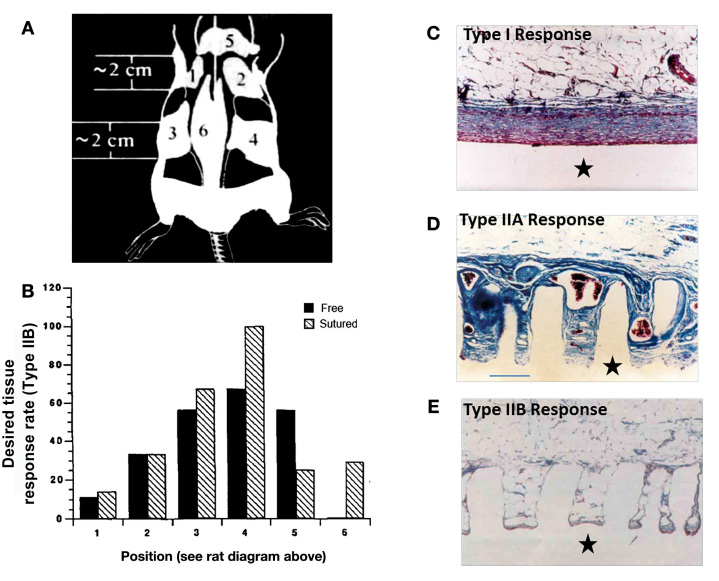Figure 3.
Even in the same compartment (SubQ), tissue response varies with site of implantation. (A) Solid and microtextured (100-μm-diameter pillars by 500 μm in height, spaced 200 μm center to center) silicone disks (⋆) were implanted into rat SubQ tissue in six different locations as illustrated. (B) The most favorable, Type IIB, response rate is plotted versus implantation site for free and sutured micropillared implants (4 weeks). A 100% type IIB response is observed for the sutured implant in the fatty tissue bed of site 4. No type IIB responses were noted for free implants in position 6, which is consistent with the authors' supposition that both microtexturing and reduced motion are as more likely to lead to a type IIB response. Trichrome stained, 100x. (C) A Type I response as measured for a flat (nontextured) implant, encapsulated by a highly aligned fibrous capsule. (D) A Type IIA response: dense collagen and large blood vessels (~100–200 μm) found in and around pillared surface material. (E) The optimal, Type IIB response with little to no capsule and capillaries in intimate contact with the pillar surface (too small to be imaged in this diagram). The varying tissue responses observed in (D) and (E) are dependent on the SubQ implantation site (B) as well as fixation to reduce motion. Figures adapted from Picha and colleages.58

